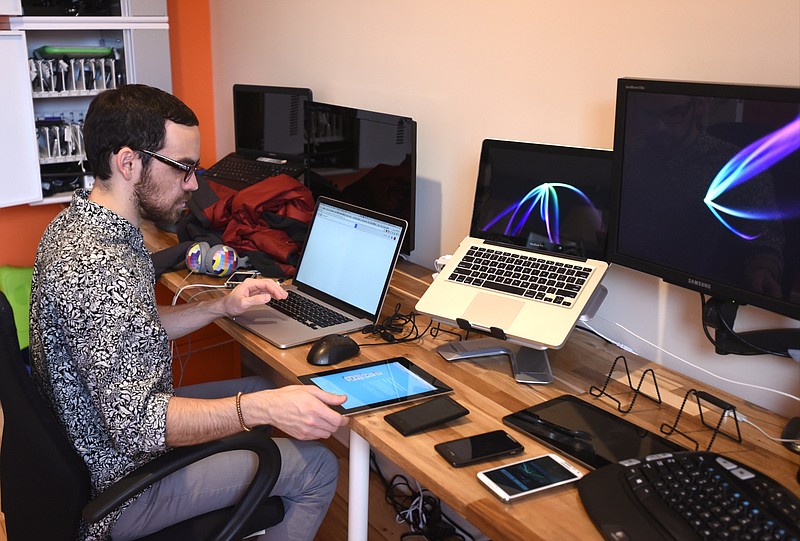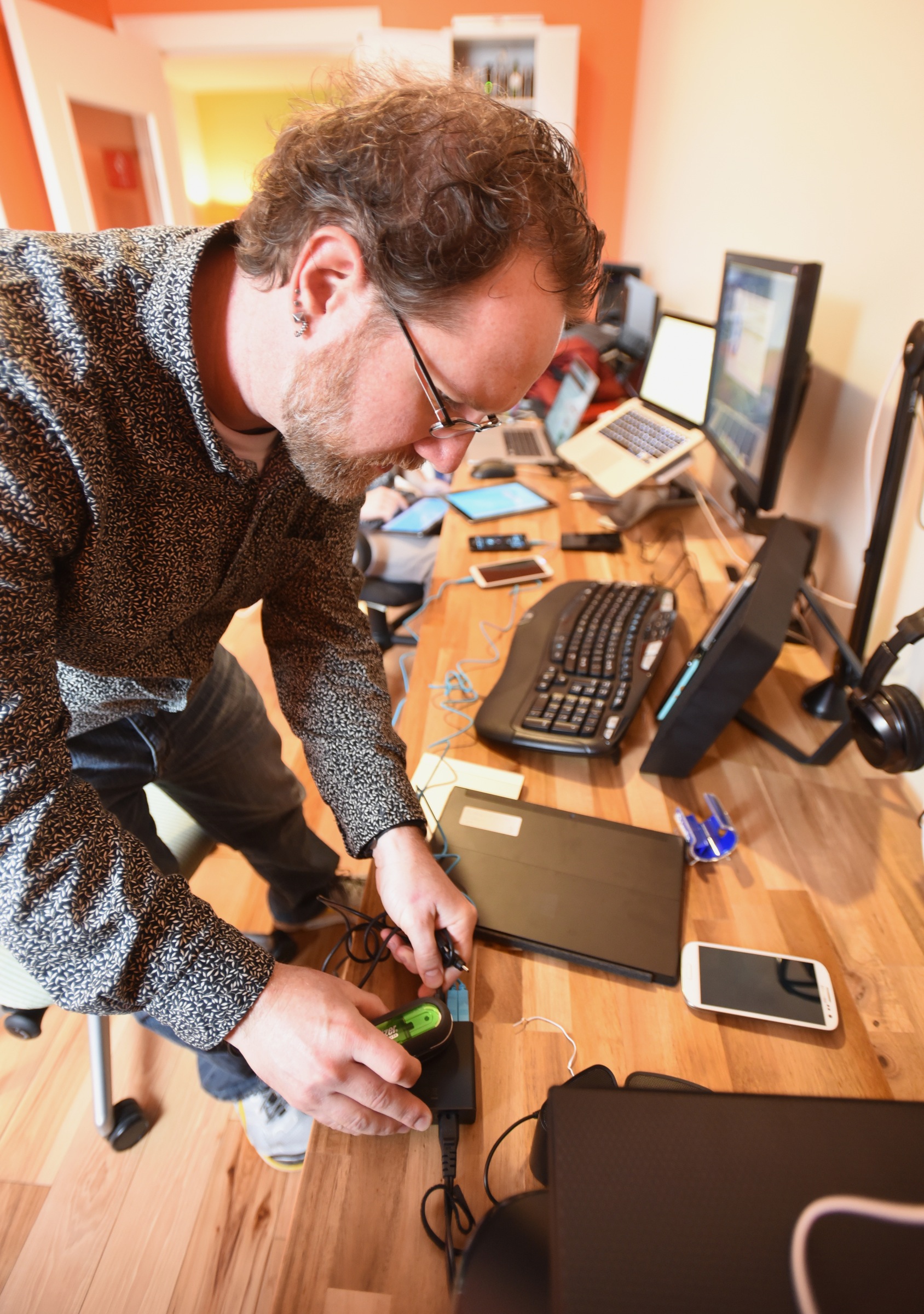I think everyone deserves an opportunity to be able to check their bank balance or to research their city government or just to send photos to their kids. I think if [developers] cater to too small of an audience, you miss out on an opportunity to reach more people and to have more of an impact and have your business be more successful.
More Info
Donate a deviceIf you have an outdated phone or another older device with a functional wireless signal and an Internet browser, you can donate it through the global Open Device Lab initiative Donate Your Dusty Device. A list of labs and shipping instructions are available at opendevicelab.com/DYDD.
More Info
Book testing timeWant to schedule testing time at the Chattanooga Open Device Lab? Fill out a request form at chadevicelab.org/book-time. You’ll be asked to provide your name, phone number, email address, a request time slot and alternate time slot and which devices you’d like to be made available.
In the digital kingdom, fame and power are fleeting, and it wasn't long after the iPhone's 2007 launch that it was supplanted from top of the technological heap by newer and more capable smartphones.
By 2010, original iPhone users could no longer update their phone's operating system, which meant many newer apps couldn't be installed and older ones stopped working. Two years later, Apple declared the original iPhone to be officially obsolete, a classification that stripped it of access to technical support from the manufacturer or its sellers.
Like a kind of silicate zombie, however, the original iPhone is still defiantly shambling around the Internet in utter disregard of its official status as a bygone relic. According to a September 2015 feature in Time magazine which cited data from mobile marketing firm Fiksu, about 0.1 percent of the estimated 700 million iPhone users worldwide - about 700,000 people - are still going online with the original model or its 3G successor which, in most countries, Apple also has deemed obsolete.
Cases like the iPhone show that outdated devices haven't necessarily outlived their usefulness, says Aaron Gustafson, the 38-year-old owner of Southside-based web consultant Easy Designs.
"I think, in a lot of cases, folks in the design and technology community tend to get lulled into a false sense of security, in terms of the devices people are using, because the people around us are using an iPhone or the latest and greatest Android device," he says. "The reality in the world is a much different story."
In 2013, just as Apple was putting the iPhone out to pasture, Gustafson was dedicating space in his office for the Chattanooga Open Device Lab, the local version of a worldwide network of free repositories of older, Internet-ready devices.
Its collection of physical devices runs the digital gamut, from a six-year-old Kindle 3 e-reader to game systems such as the Xbox 360 and Nintendo Wii to a handful of aborted technological oddities such as the Microsoft Kin, a social-media-focused smartphone with a physical keyboard that flopped almost immediately after its 2010 release.
For devices that aren't available in physical form, the lab also has programs such as Browserstack that can virtually mimic hundreds of devices and operating systems.
Via an online form, software and web developers can schedule time in the Open Device Lab to test their software and websites on older devices that are still being used on the margins of the online community. The service is free, making it a philosophical endeavor for Gustafson, not a monetary one.
And beyond making it easier to test on older operating systems and Internet browsers and improving the quality of their software, developers say open device labs help keep the Internet democratized.
"It's just important to have the Internet be accessible to anyone, regardless of your income or the phone you have," says Guillermo Martinez, a graphic designer and web developer at Chattanooga-based "brand invention agency" Humanaut.
Earlier this month, Martinez scheduled time at Open Device Lab to see how a website for one of Humanaut's clients would function on older devices. During his session, he requested access to an original iPad, the Droid X smartphone and the Samsung Galaxy 10 Tab, which were arrayed in a row along the lab's wide wooden desk.
"We have to test for those, so we come here," the 25-year-old Martinez says. "We try our best to give access to people to website and apps, whether they have disabilities or their technology is minimal, so they can access these sites and have the maximum reach."
In February, the Pew Research Center released a study polling access to the Internet and smartphone ownership in 40 countries. According to Pew's findings, a median of 43 percent of the world now owns a smartphone, but Gustafson says that figure can be misleading.
"A lot of developers look at that and are like, 'Oh, we have good smartphone penetration,' but that's [also a high] percent of people who don't have smartphones," he says. "Those are the people who are still using things like Facebook and other forms of social media or whatever it is that someone is trying to build as the next great product."
The Open Device Lab movement began in April 2012 as a grassroots, nonprofit initiative founded by Jeremy Keith, a web developer based in Brighton, U.K. Keith realized the work that he and other developers did often resulted in amassed backlogs of aging devices that couldn't use new software or apps and essentially were doing nothing but gathering dust. In a blog post from April 30, 2012, Keith reasoned that offering up these devices to other developers as test platforms was a win-win for content creators and consumers alike.
"I think that any kind of testing with real devices should be encouraged," he wrote. "I find it disheartening when somebody blogs or tweets about testing on a particular device, only to be rebuffed with sentiments like 'It isn't enough.' It's true - it isn't enough but it's never enough. And the fact that a developer is doing any testing at all is a good thing."
According to OpenDeviceLab.com, the global network of device labs now includes more than 150 locations in 35 countries providing developers with access to more than 4,300 devices. There are 28 labs listed in the U.S., of which only Chattanooga, Smyrna, Ga., and Charlotte, N.C., are located in the Southeast.
To date, Chattanooga's lab has a perfect five-star rating on OpenDeviceLab.com, which allows those who use an open device lab to rate its usefulness.
"[Chattanooga Open Device Lab] really helped us during our recent site redesign to be able to hold the devices that our users would be using in our hands and see what their experience was going to be like," reads a review by Adam Haney, the director of research and development at Chattanooga-headquartered, on-demand moving service Bellhop Nation. "It saved us days of debugging and made for a much better user experience during the initial launch."
The only requirements for a device to be included in the lab are a functional wireless connection and an Internet browser; it currently has 52 devices on hand housed in a pair of wall-mounted metal cabinets. Although the lab accepts donated tech, about half the device collection was bought by Easy Designs during work on a contract for an investment company. Others have been secured by donations from real people or by soliciting devices directly from the manufacturer, Gustafson says.
Some of the devices in the collection, he admits, are kept around largely as amusing curiosities, such as a budget netbook made by Sylvania, a company better known for producing light bulbs. But he insists that any device with an Internet browser has the potential to be someone's portal to the web, which legitimizes its inclusion and its potential usefulness to a developer.
"If it's functional and can browse the web, that's all that matters," he says. "We basically help to keep a lot of those devices out of landfills."
Contact Casey Phillips at cphillips@timesfreepress.com or 423-757-6205. Follow him on Twitter at @PhillipsCTFP.

